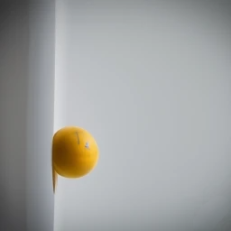How Can Teleportation involve Time Travels?
Albert Einstein's Theory of General Relativity permits the existence of Closed-Timelike Curves (CTCs) [1], which are paths within Space - Time that, if traversed, would enable a traveler to interact with their own Past self, whether that traveler be human or elemental particle. Kurt Gödel was among the first to highlight the possibility of CTCs, and subsequent research has proposed various Space - Time configurations accommodating these curves.
However, such scenarios of Time Travel inevitably introduce paradoxes, such as the infamous Grandfather Paradox [2], wherein the time traveler inadvertently alters the past in a way that prevents their own existence. This concept troubled even Einstein, who was close friends with Gödel. The reconciliation of CTCs with quantum mechanics poses a formidable challenge, tackled through various approaches, including Path-Integral Techniques [3].
The Removed “Memories” Approach...
Any theory aiming to unify quantum mechanics and gravity must address the complexities inherent in closed timelike curves, which introduce nonlinearities that challenge the Linearity [4] of conventional quantum mechanics. Deutsch proposed a resolution in his influential work, suggesting a Self-Consistency Condition (Equation 1) concerning the states within CTCs. This condition demands equivalence between measurements at the CTC's entrance and exit. However, this formulation necessitates the assumption of Factorization, implying invalidation of Future [5] "memories". However, Deutsch's theory has faced criticism for apparent inconsistencies.
Equation 1. Deutsch Self-Consistency Condition form
where [math]\small{\rho_{CTC}}[/math] is the density matrix (further information in here, Section 1) of the system state, [math]\small{A}[/math] inside the CTC; [math]\small{Tr_{A}}[/math] is the Trace of [math]\small{A}[/math]; [math]\small{U}[/math] is the Unitary Matrix; [math]\small{\rho_{A}}[/math] is the density matrix of [math]\small{A}[/math] and [math]\small{U^{\dagger}}[/math] is the transpose unitary matrix.
A New View: Overcoming the CTCs
In contrast, while acknowledging the strangeness of time travel quantum mechanics, P-CTCs, based on the Novikov Principle, appear to offer a less problematic framework. The concept of Probabilistic Closed Timelike Curves (P-CTCs) [6] was initially conceived to tackle the enigma posed by the integration of quantum mechanics into the framework of General Relativity, particularly concerning closed-timelike curves. However, its implications extend beyond this specific domain, offering insights into the potentiality of time travel in alternative scenarios.
Equation 2. P-CTC External System Time Evolution Equation
N [math]\small{[\rho]}[/math] is the Time Evolution of External System; [math]\small{\rho}[/math] is the density matrix of external system; [math]\small{Tr_{E}}[/math] is the trace of the Hilbert space (further information in here, Section 2), [math]\small{E}[/math] over the system into the CTC; [math]\small{C_{A}}[/math] is the partial trace of [math]\small{A}[/math]; [math]\small{U_{AE}}[/math] is the unitary matrix coupling the internal and external systems; [math]\small{{C_{A}}^{\dagger}}[/math] is the transpose partial trace of [math]\small{A}[/math].
Fundamentally, any quantum theory that permits non-linear processes like the Projection onto specific states, such as the Entangled States (further information in here, Ref. 2) associated with P-CTCs, inherently allows for the prospect of time travel, even in the absence of Space - Time configurations supporting closed-timelike curves. The P-CTS mechanism translates mathematically to the time evolution of the external system being , with the absence of evolution enforced if certain conditions (Equation 2) are met. The paradigm of non-general relativistic P-CTCs can be instantiated through the generation and projection onto entangled pairs of particle-antiparticle. This method mirrors renowned Wheeler's Thought Experiment [7] of a telephone call through time.

Figure 1. A typical Macroscopic Example of Quantum Tunneling: a Ball (Subatomic Particle) which overcomes a Wall (Potential Energy Barrier)
Although the process of projection is inherently nonlinear, defying deterministic implementation within conventional quantum mechanics, it can be executed in a probabilistic manner. Consequently, experimental validation of P-CTCs is achievable through Quantum Teleportation experiments, where outcomes corresponding to the desired entangled-state output are selectively post-processed. Should it transpire that the linearity of quantum mechanics is merely an approximation, and projection onto specific states indeed manifests, such occurrences could potentially be witnessed at the singularities (further information in here) of black holes.
In such a scenario, even in the absence of general relativistic closed-timelike curves, the realization of time travel might still be feasible. The theoretical framework of P-CTCs elucidates that quantum time travel can be conceived as a form of retrograde Quantum Tunneling (Figure 1), permitting temporal traversal devoid of a classical trajectory from future to past. P-CTCs rely on Destructive Interference (Figure 2) to prevent self-contradictory events, emphasizing a different self-consistency condition from Deutsch's approach.
Two Different Perspectives
Illustrating the link between P-CTCs and teleportation provides further insights, showcasing their behavior through Qubits. This demonstration underscores the compatibility of P-CTCs with Higher-Dimensional Systems and the extension to infinite-dimensional scenarios. Presently, no definitive conclusion favors either approach (Deutsch or P-CTCs), given their respective foundations and consistency with different theoretical frameworks. The aspiration in elaborating on the theory of P-CTCs is that it may furnish valuable insights for formulating a Quantum Theory of Gravity. By shedding light on one of the most enigmatic ramifications of general relativity—the prospect of time travel—this theory may contribute significantly to our understanding of Gravity at the quantum level.

Figure 2. A classic Experiment of Waves Interference: Ripples in the Water
- arXiv. "Can we travel to the past? Irreversible physics along closed timelike curves "https://arxiv.org/pdf/1912.04702.pdf
- ResearchGate. "Grandfather paradox from a new perspective" https://www.researchgate.net/publication/361446083_Grandfather_paradox_from_a_new_perspective#fullTextFileContent
- Galileo.phys. "Path Integrals in Quantum Mechanics" https://galileo.phys.virginia.edu/classes/751.mf1i.fall02/PathIntegrals.htm
- ScienceDirect. "Consistency and linearity in quantum theory" https://pdf.sciencedirectassets.com/271541/1-s2.0-S0375960100X01843/1-s2.0-S0375960198002898/main.pdf?X
- LinkedIn. "Time Travel is Real: Unraveling the Wonders of Traveling to the Future" https://www.linkedin.com/pulse/time-travel-real-unraveling-wonders-traveling-future-manjunath-m-r/
- American Physical Society. "Closed Timelike Curves via Postselection: Theory and Experimental Test of Consistency" https://journals.aps.org/prl/pdf/10.1103/PhysRevLett.106.040403
- Horizon IIT. "The Delayed Choice Quantum Eraser – does the future affect the past?" https://horizoniitm.github.io/dcqe/
- Horizon IIT. "The Delayed Choice Quantum Eraser – does the future affect the past?" https://horizoniitm.github.io/dcqe/

